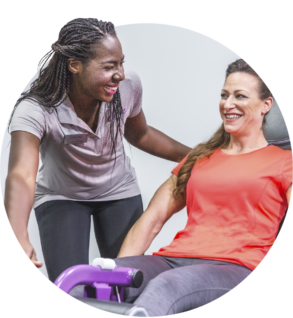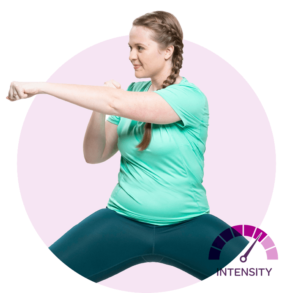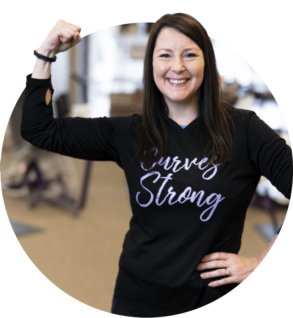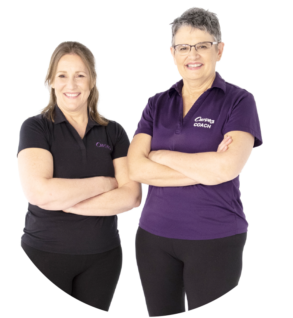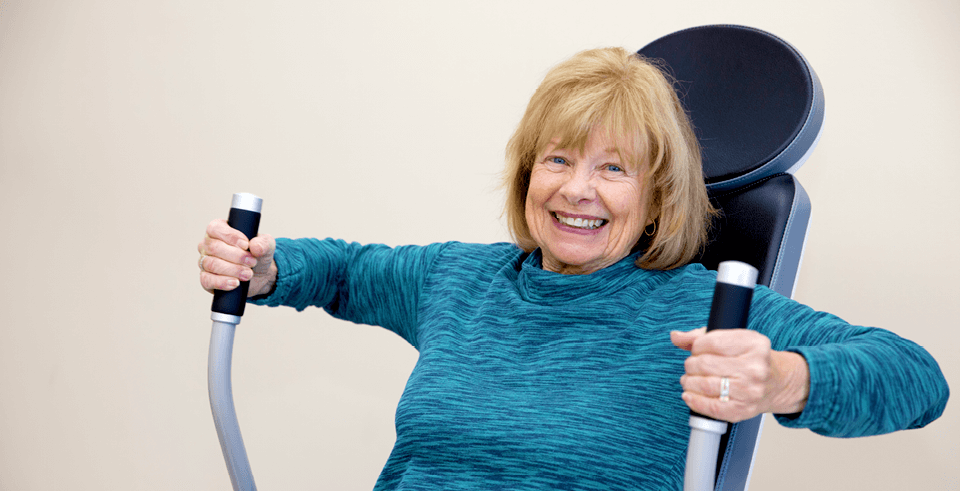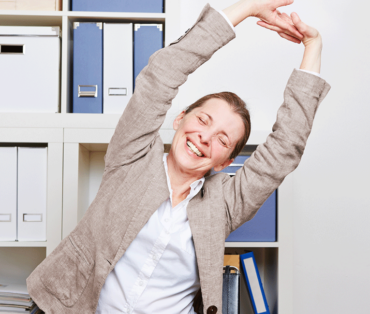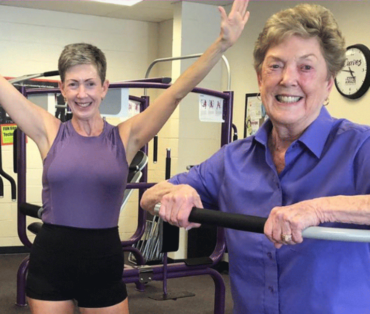Exercise Challenges As You Age
“We don’t quit playing because we age, we age because we quit playing.” George Bernard Shaw
By virtue of being human, you’re going to face exercise challenges as you age. Your knees won’t climb like they used to, your lungs won’t carry you through an aerobic workout quite as robustly as they did 10 years prior, and you’ll notice more soreness in your joints following a tough workout routine.
After the age of 40, your muscles are also losing strength1 with every passing day. That’s the bad news. The good news is, you’re not alone. All your fellow Curves sisters face the same thing. The best thing you can do is understand the exercise challenges you come up against as you get older and know what you can do to fight back.
First, by exercising regularly with the Curves Circuit, you are doing your body a big favor when it comes to aging. Research shows physically active people age more slowly than those who are sedentary.
A 2014 review published in the Journal of the American Academy of Orthopedic Surgeons2 looked at the relationship between aging and exercise. Researchers found as long as you exercise vigorously from time to time, any type of regular workout plan slows the decline of the heart and lungs’ ability to deliver oxygen to muscles by up to 50 percent. Exercise after age 403 can also help prevent age-related weight gain and reduce your risk of diseases4 like heart disease, diabetes, Alzheimer’s disease and cancer.
Here are some specific exercise challenges you face as you get older, and what you can about them:
The challenge: Injury
Just like a car, as you age, you’re more likely to break down. When you reach your 40s and beyond, you’re at greater risk for minor aches and pains, as well as more serious injuries that can sideline you for extended periods of time. Some of the most common injuries5 include: lower back pain, rotator cuff injuries, knee problems, plantar fasciitis, and hamstring tears.
What you can do: Exactly what you’re doing. Maintaining muscle strength6 with a program like the Curves Circuit increases balance and reduces the risk of falls—one of the leading causes7 of injury for older people. Strengthening the muscles that surround injury-prone areas can help prevent injuries as well. Regularly engage in a whole body workout like the Curves Circuit to give your muscles extra power to aid in preventing age-related sprains and strains.
The challenge: Arthritis
Arthritis, or swelling, pain, and stiffness in the joints, is a common occurrence in adults. According to the Arthritis Foundation,8 54 million Americans suffer from arthritis. The condition frequently affects major joints such as the elbow and the knee, which can put a real damper on your workout plan.
What you can do: Keep moving. Numerous studies show that both aerobic exercise and strength training can reduce joint pain, ease inflammation associated with arthritis, and help people complete their daily tasks.
In one study published in the journal Rheumatology International,9 researchers looked at the effectiveness of a home-based workout plan, a walking program, and no exercise on people with osteoarthritis of the knee. For three months, the first group did the home-based program, the second group did the walking program, and the third group did no exercise. Groups one and two saw less pain and more physical function compared to the group that didn’t exercise.
The moral: The best workout for arthritis is any workout at all. There is a caveat, however. If you experience pain in an affected joint during an activity, it’s a warning you should take it easy. Pain is your body’s way of telling you something isn’t right.
The challenge: Fatigue
According to a study done by the Journal of the American Geriatrics Society,10 people are more likely to feel tired as they get older. And women are more prone to fatigue than men at any age. When you feel fatigued, you’re less apt to engage in a gym workout and more likely to feel depressed and get sick.
What you can do: Get off the couch. Ironically, one of the best things you can do to combat fatigue is what you may feel like doing the least. In a study published in Psychotherapy and Psychosomatics,11 researchers looked at 36 tired people who rarely exercised. As part of the study, one group did 20 minutes of moderate-intensity aerobic exercise three times a week for six weeks. The second group engaged in low-intensity exercise, and the third group didn’t exercise at all. The low—intensity group saw the biggest energy boosts—65 percent. This is evidence that you don’t need to push yourself too hard to increase your energy; you just have to exercise regularly with a full body workout routine.
The challenge: Poor self-image
As women get older, they often feel less confident about how they look, especially when it comes to a gym environment where they feel everyone should be svelte and in tip top shape.
What you can do. Find a supportive workout environment. Part of Curves’ philosophy as a workout routine for women is to invite women of all shapes, sizes, and ages to become stronger and support their health goals. Exercise is a natural ego boost. When you engage in a full body workout, it is common knowledge that your body releases endorphins that can help combat feelings of insecurity, anxiety, depression, and sadness. By becoming active and strong, you are likely to naturally feel more self-assured. And because you feel so much better12 physically when you exercise, you will feel better mentally, too.
The challenge: Less strength
Ironically, the time in our lives when we start to lose physical strength is the time when we need emotional strength the most. When it comes to thriving as an older person, these two strengths go hand in hand.
What you can do: Train functionally. Functional training like the Curves full body workout involves working groups of muscles rather than individual ones. The ultimate goal: to maintain your ability to perform activities that carry into your everyday life, such balance exercises, stretching, and agility drills. Training with a full body workout like the Curves Circuit that combines strength, cardio, and stretching, gives a physical strength that can translate to overcoming emotional hurdles we face every day.
Next time you want to use your age as an excuse to skip your workout, remember: Exercise is one of the best anti-aging13 tools. A whole body workout at Curves can energize you, boost your mood, relieve stress, decrease arthritis pain,14 prevent illness, and help you look and feel younger overall!
**The information contained above is presented in summary form only and intended to provide broad consumer understanding and knowledge of various healthcare topics. It should not be used in place of a visit, call, consultation or advice of your doctor or other healthcare provider. You should discuss any dietary changes or supplement usage with your doctor, and should not discontinue any prescription medications without first consulting your doctor.
Your Curves Coach is there to lead you through every gym workout. With your Curves Coach success is within reach. Visit ‘Why Curves’ to find out more about Curves women’s only gyms and our full body workout on the Curves Circuit, or find your local Curves and sign up today!
1 US National Library of Medicine
2 The Journal of the American Academy of Orthopaedic Surgeons
6 The Journal of Physical Therapy Science
10 The Gerontological Society of America
11 Pscyhotherapy and Psychosomatics
14 Curves

